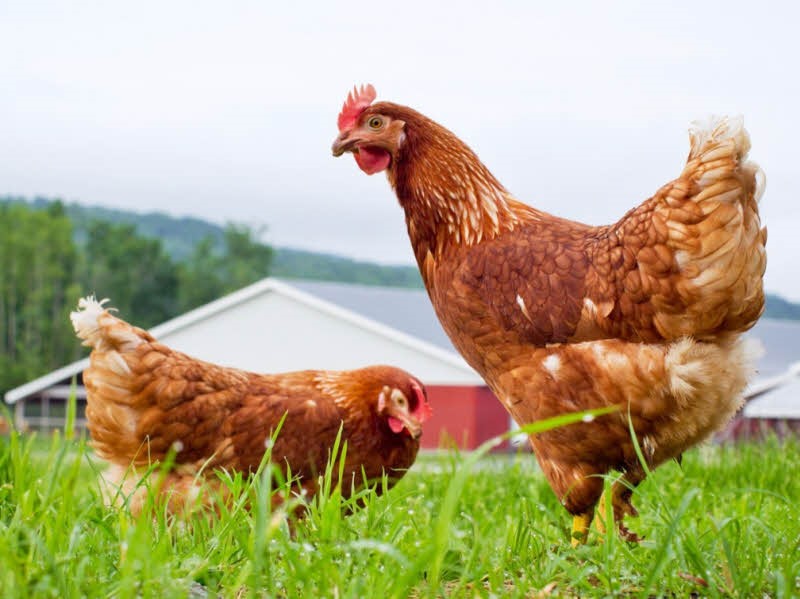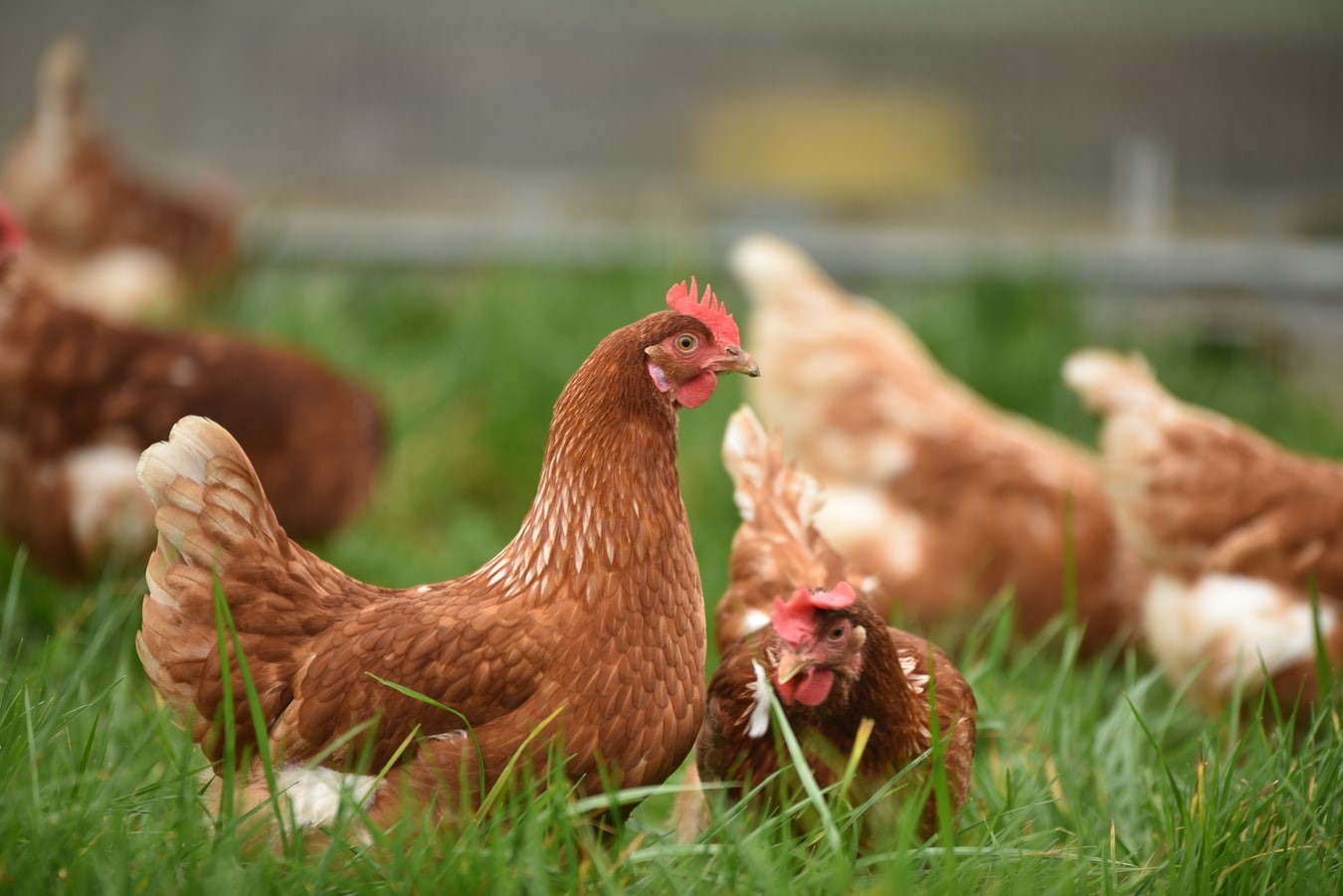It is extremely important to have prior awareness, experience, and specialized knowledge of disease characteristics and know how to treat common diseases in poultry.
Poultry is an important source of meat and eggs worldwide. However, they are very susceptible to many diseases, causing serious damage to the livestock industry. Understanding these diseases, from their causes, clinical symptoms, to preventive measures, is extremely important to maintain the health and productivity of poultry. It greatly determines the economic efficiency of poultry farming. Let’s find out common diseases in poultry to prevent diseases effectively.
1. Newcastle disease
Cause: by Newcastle virus (NDV), belonging to the Paramyxoviridae family.
Symptoms: The disease can cause symptoms in the respiratory system, digestive system and nervous system. Common symptoms include cough, difficulty breathing, runny nose, diarrhea, reduced egg production, paralysis of legs and wings, convulsions and a high mortality rate of up to 70 – 100%.
Lesions: lymph nodes in the large intestine swollen and bleeding. Hemorrhage in the gastric gland.
Image of chickens
Prevention: The disease is caused by a virus, so there is no specific treatment, so regular vaccination is the most effective prevention measure. At the same time, it is necessary to ensure hygiene of the barn, spray disinfectant on the barn periodically, limit contact with wild birds and quarantine newly imported poultry before entering the herd. Periodically provide supplements and multivitamins to increase poultry resistance.
2. Bird Flu
Cause: Due to influenza A virus, mainly H5 and H7 strains. It is a dangerous infectious disease and must be declared an epidemic and destroyed when poultry gets sick.
Symptoms: Avian influenza can be highly fatal and spreads rapidly. Symptoms include fever, decreased appetite, decreased egg production, edema of the head and crest, diarrhea, bleeding of the leg skin and rapid death and high mortality rate can be up to 100%.
Prevention: the most effective disease prevention method is vaccination, controlling the spread through isolating and destroying infected poultry, regularly cleaning barns and limiting contact with wild birds. Disinfection periodically use disinfectants. When a disease is detected, it must be declared an epidemic and destroy the entire poultry herd.
Image of chickens
3. Disease Ib – Infectious Bronchitis
Reason:
The disease is caused by Corona virus (RNA virus). It is a very serious acute infectious disease in poultry, especially in chickens, causing huge economic losses. The disease occurs all year round and in all ages in chickens with an incidence rate of 50 – 100%, causing death 0 – 25%.
Symptom:
When chickens have respiratory problems, they have typical symptoms such as:
– Chickens are moody and have poor appetite. Sick chickens huddle together near a heat source.
– Coughing, sneezing, wheezing, stretching your neck to breathe and yawning.
– Chickens have severe diarrhea, green stools with white and slimy moss.
– High mortality rate, sometimes up to 70 – 80% in chicks, chickens are susceptible to other factors such as CRD, ORT, immunodeficiency, poor cage ventilation, etc.
For laying hens: The number of eggs decreased by 10 – 60%, the rate of deformed eggs increased (soft shell, distorted, rough or no shell, etc.), the hatching rate decreased. Laying hens often have drooping buttocks and drooling.
Prevention:
– Good disease prevention hygiene: Regularly disinfect the barn, farming tools, sprinkle lime powder, keep the barn always dry, clean and airy, minimizing stress for the chickens, especially during seasons and transitions cage.
– Preventive vaccines are the most effective method to prevent, choose vaccines from reputable brands and absolutely comply with the vaccine schedule depending on your local epidemiology to choose the appropriate vaccine line.
4. Gumboro disease
Cause: Gumboro disease is an acute infectious disease in chickens, but mainly in 3 – 6 week of age and turkeys. Caused by the Infectious Bursal Disease (IBD) virus. They affect the Farbricius pouch, causing immunodeficiency.
Symptoms: Young chickens infected with Gumboro disease often have diarrhea, thin, watery, white, slimy stools, dehydration, weight loss, ruffled feathers, and high mortality rate. The chicken turns its head toward the anus to peck and scratch.
During surgery: Severe bleeding on the thigh and chest muscles. The Far sac hemorrhages, swells or shrinks, the kidneys swell with urate, etc.
Image of chickens
Prevention: For viral diseases, the most effective method to prevent the disease is still vaccination, and at the same time clean the barn periodically and disinfect to kill pathogens and control the spread of viruses. Provide supplements and vitamins to increase resistance for chickens.
To prevent and control diseases in poultry, pay attention to cleaning, disinfection and vaccination. You can use antiseptic products such as Iondin @ or Dexon super which are safe antiseptic products to use in the presence of animals. At the same time, periodically adding supplements and multivitamins to increase resistance for poultry, especially when the weather changes and seasons change. You can use products such as Glucan C, Imkooler to increase the resistance of poultry.
To sum up, farmers should also briefly learn about common poultry diseases so as to detect and diagnose poultry diseases early and isolate and treat promptly to help animals recover faster and minimize economic losses.



